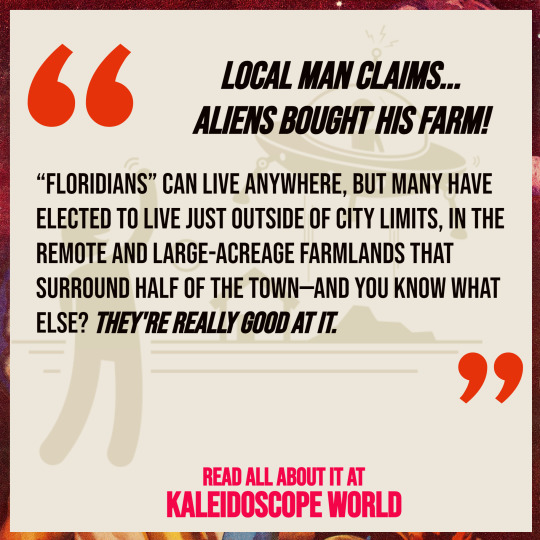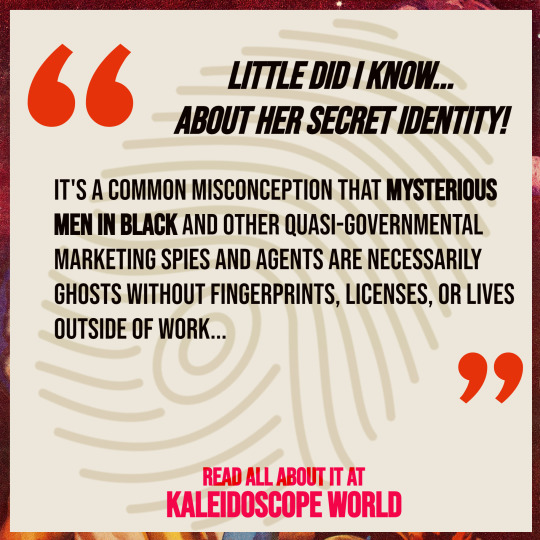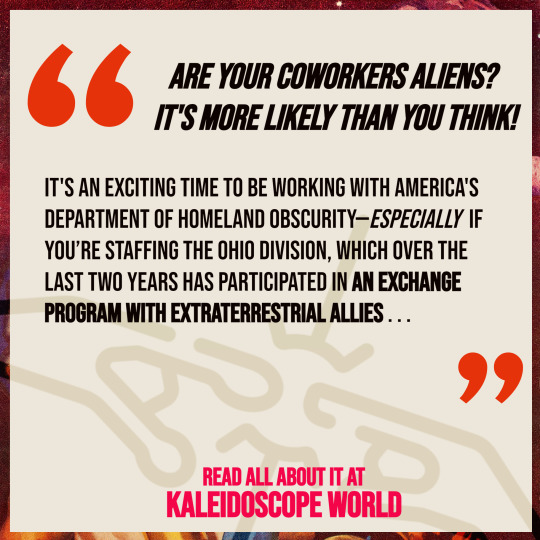#Subplots
Explore tagged Tumblr posts
Text
#romance subplots#writers of tumblr#writers on tumblr#writers#writing polls#poll blog#pollblr#writer polls#writing community#writing queue#tumblr polls#subplots#writing#writing relationships#romance positive#romance repulsed#romance polls#subplot polls
58 notes
·
View notes
Text
Writing Tips: Subplots!
Purpose of Subplots
Add complexity and depth to character arcs, worldbuilding, and themes.
Create contrast and pacing variety.
Set up sequels or future plot developments.
Support the main story emotionally or narratively.
Common Types of Subplots
Romance: A subplot unless central to the story (e.g. LOTR, Pride and Prejudice).
Secondary Character Arcs: Minor characters show growth that supports the main plot (Haunted House).
Ancillary Goals: Main character has internal goals (e.g. family, identity) alongside external ones (Binti).
Backstory: Flashbacks provide character motivation (Six of Crows).
Dramatic Tension: Side story builds hidden stakes (House of Hunger).
Thematic Resonance: Subplots reinforce central themes (The Grapes of Wrath).
Six Subplot Dangers
Too Many Subplots
Overcomplicates the narrative.
Rule of thumb: Max 3 subplots unless writing an epic.
Overshadowing the Main Plot
If the subplot is more compelling, it may need to become the main plot.
Shoehorned Romance
Forced relationships weaken narrative; consider friendship or alternate pairings.
Pointless Subplots
Must connect emotionally or thematically to the main plot or be cut.
Uneven Pacing
Poor subplot placement disrupts story flow; time it to complement tension.
Unresolved Subplots
All arcs must have a beginning, middle, and end. Use a spreadsheet to track.
Best Practices
Every subplot should advance character, plot, and world.
Use charts or templates to visualize and balance threads.
Revise subplots in later drafts for cohesion.
This summary of writing subplots is gleaned from Quitidian Writer’s video:
youtube
20 notes
·
View notes
Text
If you’ve hit a wall in your novel because your great idea isn’t panning out quite the way you’d imagined, there’s a good chance that what you’re missing is a subplot. A successful novel is quite often the intersection of two good ideas—not just one. As Tony Earley put it, “Every story is about the thing and the other thing.” A subplot is a secondary storyline that complements the main plot of your novel. It is particularly useful for pacing, because it can either add breathing room where you need it or increase the tension. It can also develop your theme by adding layers to the story, and it can add complexity to your protagonist by developing a facet of their character that might not otherwise get attention. You can also use a subplot to give your characters conflicting goals, thus making the outcome of the story more uncertain.
25 notes
·
View notes
Note
Hiiiii!
To premise my ask, I am finding difficulty making my two male characters go from friends to dating subtly. Like in a way that makes the reader go ‘OH’ when it comes out. I'm mostly struggling because these are teenage boys who make gay jokes(nonoffensive, just basic stuff I see people do all the time like “that was a little fruity bro” or “if you like me like that just say it” also if that is offense let me know, I'm straight and struggling a bit😭) in friendly banter.
If that was hard to read let me attempt to summarize:
How to write two non main characters subtly start dating?
Idk. Im also new to romance so anything is helpful!
Thank you for reading my nonsense ramblings!!!!
Hey there! Disclaimer: this blog is fairly inactive now, sorry-- most of the mods got busy and and I lost the energy to run it.
However, this is primarily a writing question, and I like talking about writing, so I'll give my advice:
There are 2 questions here: 1 is if their gay jokes are okay, 2 is how to have a background romance.
1: The problem I see here is, if these characters are not out as queer to the reader (like if the reader knows they're queer but not that they're dating), this could definitely read offensive. I don't like hearing about straight people making jokes about us-- the reason gay people might call each other fruity or other terms is mainly ironic or to reclaim those terms. If I'm in a room of straight people making those jokes it makes me uncomfortable bc they're punching OUT, while amongst other queer people, the jokes are made funny because everyone there knows the others ARE queer. Context is important.
That said, there's definitely times where things like that seem to set up a ship (that we have a history of thinking will never be true, but is more and more common). For this I think the joking flirting is perfect. So I think joking flirting is fine.
"Fruity" and other terms, even queerr and gay-- or jokingly homophobic jokes (like, I say to my partner all the time, "that was gay, we don't do that here" and it's completely a joke), may come off wrong. Some things I just do not want to see as a joke period, no matter who says them, how out they are, even if the speaker is queer. Some things I find fine to joke about irl but don't think should be in books because it does reach a wider audience (there's nuance there, no hard and fast rules, but there definitely are things I wouldn't mind jokes about but wouldn't want repeated in books). And then there's plenty of lighthearted stuff that is perfectly fine for queer characters to joke about just like people do irl. I think "Fruity" as yourr example is probably okay when it's from queeer characters but might cause some discomfort if I think the people saying it are straight. (That said, fruity is usually used for gay men, I am not one, and will ultimately differ to those who have more experience with the term).
That said, I think your best move is: let it slip to the reader, or make it kind of obvious, that ONE of them might be into the others, or is queer. Some comment nearly in, some special focus on that character, flattering descriptions of men, or jokes about themselves being queer (or if you're up to it, they come right out and say it).
2. How to write a romance behind the scenes:
My advice? Write it.
I've seen a lot of advice that writeers first needed a warm-up. Before you geet into writing your main story, spend like 15 minutes writing the two of them interact. Have them flirt, have them confess, have them cuddle or do things for each other. Look up fluff and ship prompts, even AUs.
Then, or at the same time if it jives with you, plot out their romance alongside your regular plot. A few points to decide when they happened: when they each started to like each other, when they admitted it, when they went on a first date, when they had sex for the first time (or if, this is optional), other points in the world relationship-- using your fluff scenes as inspiration.
Then you know where they stand. You can add little moments into the main story now. You can have them have an inside joke that they reference because you actually know what happened! (Though, tell us later, after revealing it, even if it's quick). You can have them spending time together that the MC doesn't think that much of.
This romance will not be in the main story, so you don't have to be good at romance. It can be dumb and cringe, or lack real chemistry, bc no one will see it.
The way I describe this sounds like a lot, but my advice with sketching the beats out and writing small scenes can apply to any sub/background plot you have. Really you may only spend like 4-6 sessions doing a warm up with them, then switch to different characters or background scenes or just rewriting smth from a different character's POV, and then plot out the beats once before moving on to another background thing.
If anyone else has any ideas about writing a suble/background romance, feel free to chime in!
-Mod Emma
11 notes
·
View notes
Text
Drop 003: Subplots Teaser
Though they'll almost certainly be involving and changing as the site moves forward, we've decided to start with a handful of subplots for writers to take into account when making their characters. After our soft open on Tuesday, the full rundown and description of all will be accessible through our guidebook.
Battle of the Headlines
The Daily Prophet and other traditional news organizations have been struggling as new digital news platforms have started taking over, even as the traditional organizations tried to adapt to the new technology. The Prophet especially begins to insist that news should be on physical paper, not “silly enchanted screens.” They start accusing the new digital organizations of spreading false information & other unethical practices. Traditional wixen tabloids like Witch Weekly and The Quibbler are struggling to stay relevant alongside social media and new digital tabloids geared towards the younger generations. Podcasts and live-streaming start gaining popularity — especially in the younger crowds — threatening to replace wixen radio and talk shows. Older generations call it a fad (as the older generations so often do), but younger listeners & viewers have become hooked on true-crime podcasts, historical retellings of the Second Wixen War and the Battle of Hogwarts, and a recent favorite: ‘Growing Up Muggle’.
The Dark Wixen Web
With the utter newness of magical technology, the Ministry has struggled to keep up with regulations & safety measures that go beyond the Statute of Secrecy. Because of this, a wixen version of the dark web has emerged. It’s full of dangerous rumors, illegal spell-sharing, black market trading, and even some Trojan horse hexes disguised as fun, exciting, and even helpful apps. The Ministry knows they have to crack down, but they don’t quite know how.
Trust vs. Untainted
Operating under a facade of legitimacy, the Carkitt Trust are an uber-wealthy group that controls Carkitt Market and its legal and not-so-legal economies. They specialize in the booming drug and illicit substances trade, illegal gambling rings, and underground dueling clubs. They might present themselves as the trustworthy protectors of the market, but they control the market — both legal and not — through extorsion, bribery, corruption, and contracts. A more brutal and cold-blooded group operates out of the desolate and all-but abandoned Knockturn Alley, and they call themselves the Untainted. Unlike the Carkitt Trust, they don't much care for appearances so much as power and control, and they'll use any means necessary to get it — up to and including death. Following a heavily publicized street war between the two gangs, which resulted in multiple casualties of important members of society, like aurors and Ministry officials, as well as a large number of the Carkitt Trust and many other civilians. Arrests were made, of course, but tensions have only remained high — and have continued to fester — ever since.
BIQL Players' Association Strike
With the rise of tech, fans have also started to purchase more merch as well. No longer is merely attending a game enough, but most feel as if it is necessary to wear the colors or merchandise of their favorite team in support. These increased merch sales were actually a contributing factor in the current players' strike due to frustrations at the lack of profit sharing. As of this time, no agreement has been reached between the players and the league.
Member-Created Subplots
Because we're a collaborative, character-driven roleplay, we will want to highlight any plots that our members come up with. After Devil's Snare gets moving, we welcome players to chat with staff about potential side plots they feel might make since to highlight!
2 notes
·
View notes
Text

The year is 2033, and the wizarding world has known peace for nearly three decades under the guidance of the Ministers for Magic. Dark wizards of old have been apprehended or cleared of war charges, laws favoring purebloods have been eradicated and others ensuring the rights and treatment of the wizarding world's inhabitants have been instated. But harmony can never remain. The wars may have ended, but a group of radical pure-blood supremacists have gathered in the shadows. They walk the streets freely - the potioneer helping you at St. Mungo's, the auror you trust. Led by Silas Avery, they believe Magic should only be a privilege of pure-bloods, a dying breed, and seek to reclaim it. All was going as planned, unfolding quietly, until there was a murder at the Ministry. Shacklebolt Kingsley's daughter, Elivinia, an Unspeakable in the Department of Mysteries, was found dead. She learned of the Five Horsemen's sinister plot. And for that, she had to die. Even memory charms, after all, are not wholly infallible. While the Ministry has failed to uncover any leads on the perpetrators and has yet to link Elivinia's death with the curse, a vigilante group, the Brothers Grimm, has turned their sights on them. But will they be able to stop them in time?
#subplots#hp rp#harry potter rp#jcink rp#jcink site#jcink premium#jcink roleplay#jcink ad#semi private rp
4 notes
·
View notes
Text
So we all know that Scorpion has had many Subplots that were started and then thrown into oblivion later without being finished, right? Simple things that could've been major but weren't.
I want the cyclone to reblog this post and mention as many of them as you can, so that I or anyone that is writing a season 5, could use them and tie loose ends.
13 notes
·
View notes
Text
The Art of Writing Subplots: Adding Depth to Your Narrative
Every great story is like a tapestry woven with multiple threads, each contributing to the overall pattern. These threads, in the world of storytelling, are often referred to as subplots. Subplots are intricate, interwoven narratives that run alongside the main storyline. While they might not take center stage, subplots play a vital role in adding depth, complexity, and richness to your…
View On WordPress
#Building Tension#Character Development#Conflict in Writing#Enriching Narratives#Literary Analysis#Literary Craft#Narrative Depth#Pacing in Writing#Secondary Storylines#Storytelling#Subplots#Thematic Exploration#Writing Techniques#Writing Tips
3 notes
·
View notes
Text









#dicking around#plots#subplots#groups#member groups#science fiction#kaleidoscope world#jcink rp#jcink site#sci fi rp
2 notes
·
View notes
Text
I absolutely love games with subplots, I love when there's stuff going on that you only hear about tangentially because it's not the focus, I love when everything that is happening doesn't have to be on screen for us to enjoy a story.
Cooking horror game where you play as a cook working in the galley of a ship in the 1800s. There’s some kind of supernatural nautical horror story going on in the background but you barely notice this because you spend all day cooking in the galley.
105K notes
·
View notes
Text
Writing Tips: Subplots
Character Depth: Subplots provide insight into a character's life, motivations, and past experiences, making them more relatable and multi-dimensional.
Structural Integrity: They should connected to the main plot, and follow a structured narrative arc with a clear beginning, middle, and end, to feel satisfying.
Main Plot Impact: Subplots should influence the character's journey and the central conflict, contributing to their development.
Ideas for subplots: Exploring family dynamics, a secondary antagonist, a love story for added tension, revisiting a character's past.
By integrating subplots with the main plot, we create layered narratives while deepening character arcs and enriching story experience.
This is part of my Writing Tips series. Everyday I publish a writing tip to this blog.
16 notes
·
View notes
Text
Subplots
I love subplots but at times the complexity can get a little out of hand. I know what I want my characters to do. Unfortunately I have no idea exactly what they are doing. Specifically I forget where I left them and constantly need to dig back through my outline or even into my WIP to figure out their status.
0 notes
Text
There Are Times to Plan
If you’re the type of writer who writes by the seat of your pants (pantser), there are times when you have to sit down and plan. How you plan out your story depends on which method suits you as an individual. I know writing by the seat of your pants feels comfortable, but when your story starts getting away from you, that’s when you know it’s time to stop, take a deep breath, let it out, and…
0 notes
Text
plot plot now subplot
Writing Subplots
Who doesn’t love a good subplot? Some of my favorites books are the ones that have super interesting subplots because who doesn’t love hearing about that secondary character development arc or those lovely side characters with the inevitably doomed romance? What’s not to like? But, subplots can often be one of the hardest to write and the most misunderstood storytelling elements. They aren’t part of the main narrative thread, so they can’t overtake it, but they also need to have their own story arc separate from the main plot. It’s a delicate balance that can be kind hard to strike, because subplots aren’t just secondary plot-lines, they have to serve a narrative purpose and engage with the story’s central conflict.
First, let us define some different kinds of subplots
Mirror Subplot: A subplot where a side character experiences a conflict that mirrors the protagonist’s main conflict and gives the protagonist the insight or motivation they need to resolve their own conflict.
Romantic Subplot: The protagonist’s relationship with a love interest complicates their journey to resolve the story’s central conflict.
Parallel Subplot: a subplot where something seemingly unrelated occurs at the same time as the main plot and then all of a sudden the two plots collide towards the end of the book.
Complicating Subplot: a subplot where a secondary character’s actions actively complicates the protagonist’s journey with the central conflict
Foil Subplot: a subplot where a secondary character experiences the same or a very similar conflict as the protag but wants to resolve that in a different way (this contracts or creates a “foil” that highlights the protagonists qualities and characteristics)
There are a lot more different kinds of subplots, but these are some of the most common, so here are some tips for writing subplots!
Is That Necessary?
This is the first question we should ask ourselves anytime we add anything to our stories, but especially subplots. Sometimes, authors (meaning me) will get to the end of writing their first draft and realize that they are not anywhere close to their goal word count. To remedy this, they will just throw in a cute little subplot. Unfortunately, friends, this does not work. The best, effective subplots should be integral to a story’s central conflict. If you can remove your subplot from the story without their being a big impact on the central conflict, then the subplot doesn’t really serve a strong narrative purpose. We most often see this problem arise in romantic subplots. Authors will just throw in a romance or the dreaded love-triangle as a subplot for absolutely no reason. I’m the first person to admit I love a good romantic subplot, but I also like it to be there for a good reason. That is why the Hunger Games will never go out of my top five all time books/series because despite what a lot of people think the romantic subplot in that story is essential. Katniss and Peeta’s love story is the reason they both survive the Games which is the central conflict of the book. It works perfectly, and if you want a good example of a subplot done well, look no further.
Keep the SUB in Subplot
Honestly, sometimes the subplot really is better than the main plot. That’s not necessarily a good thing, but I think we have all read a book where the main plot just drags and you just can’t wait to get back to your favorite side characters and their little adventure. But, a good subplot shouldn’t steal the limelight from the main plot. It should enhance the main plot and maybe add a layer of complexity but never overshadow. Going back to my example for the day, the Hungers Games does a really good job of this. I read something once where someone said Katniss’s romance overshadows the Games and the Rebellion, and I was like, did we read the same book? If you go back and read the books, Katniss doesn’t think about her romance with Gale or Peeta all that much. She’s mostly thinking about her own survival and the survival of her family. Both of which relate directly to the main plot. We never forget about the romance in the book because it is important, but in my opinion, it never overshadows the main plot of the Games and the Rebellion even in the first book where it’s more heavily featured.
But, Its Still A Plot
On the flip-side of that, even though the subplot shouldn’t overshadow the main plot, it still needs to follow its own narrative arc. This is where a lot of new author’s get lost. A subplot is way more than just a short conversation or a quick event that inconveniences or helps the protagonists. All your subplots need their own beginning, middle, and end. Make sure that you definitely developed all of your story’s subplots accordingly. That includes paying attention to all of your characters’ goals, motivations, and the conflict that they experience. Generally when I’m in the development stages of the subplot, I develop it the same way that I develop one of my main plots. While they do not necessarily need the same attention or development as your main plot, developing them with the same goals in mind will only help you in the long run!
2K notes
·
View notes
Text
Subplots: When Do They Suck?
How can writers avoid the dreaded D-level B-plot? Today we're talking about how to identify and bolster weak subplots.
I saw this topic spring up online recently, and it got me thinking: what makes a subplot bad? As a writer, it’s an important question—the fewer bad subplots, the more money we make. The more money we make, the faster we become eccentric weirdos hammering away on a typewriter in our custom-built, cliff-perched, storm-wracked Enya castles. I mean, the more fulfilling art we can make or…
0 notes
Text
the way that the stranger things characters only decide to team up and gather all the information like a puzzle coming into place ONLY AT THE END OF THE SEASON DBFIHBJDCKCMAJBFBIUNV makes me sick to my stomach
#but i love the show i swear#i could do some of the writing for them but#they discover things and... stay silent#that's not healthy#stranger things#hawkins#subplots
0 notes